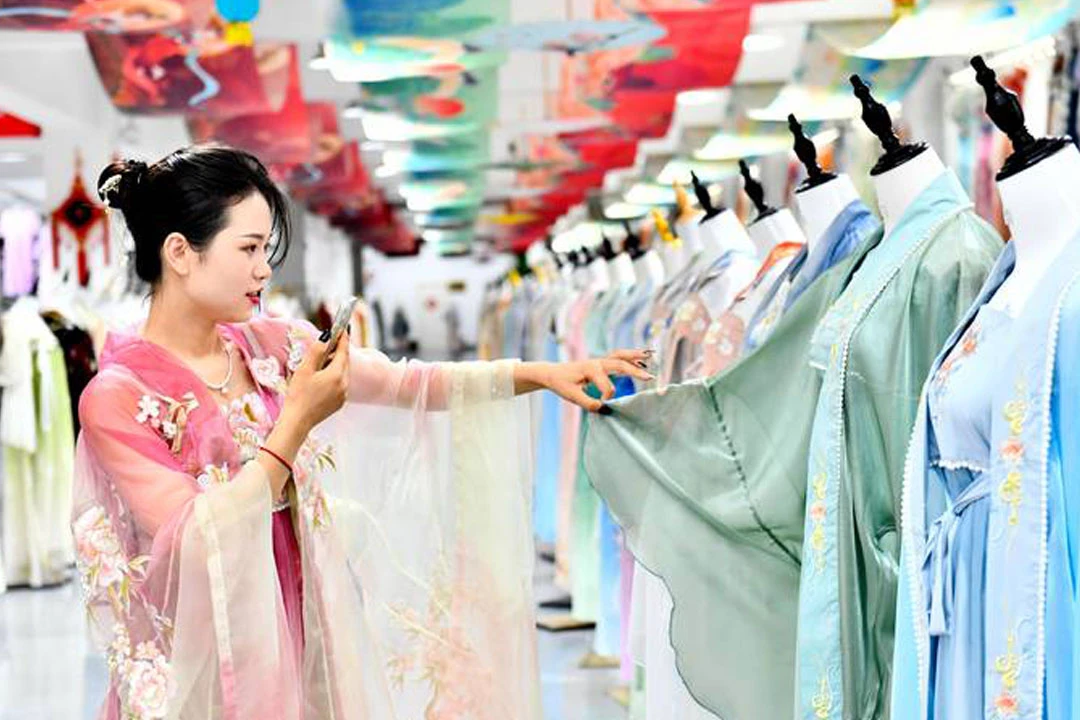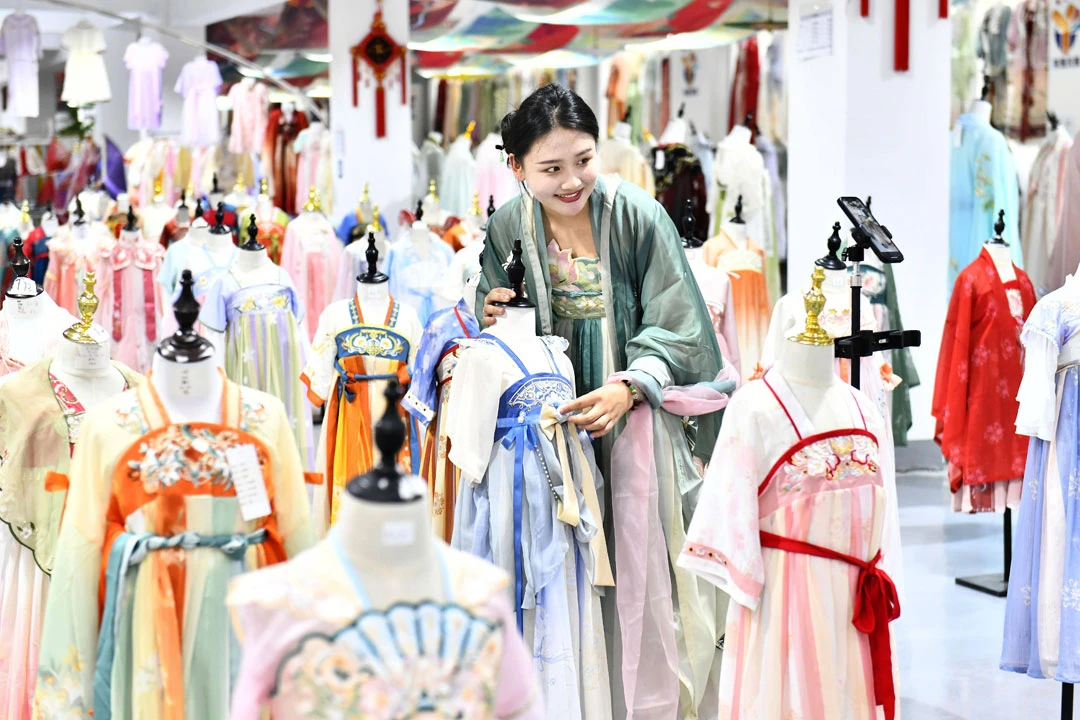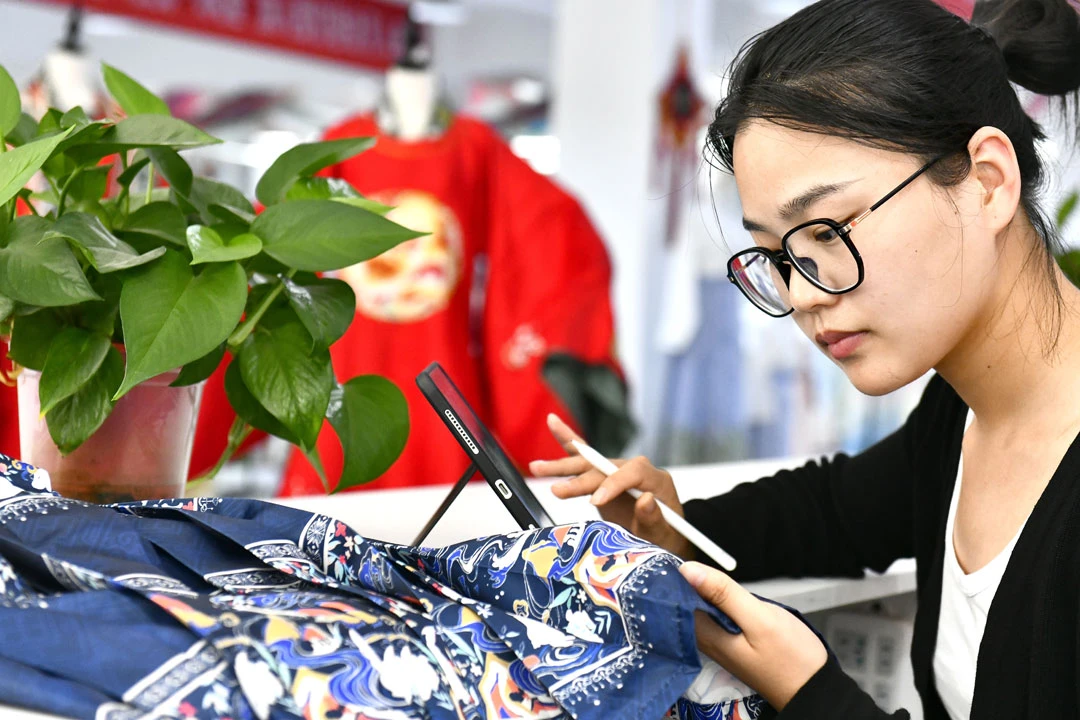From Niche to Billions: The Explosive Growth of Hanfu Industry
In the heart of bustling Shanghai, amidst the gleaming skyscrapers and neon lights, a curious sight unfolds. A group of young professionals, dressed not in Western suits or casual wear, but in flowing robes with wide sleeves and intricate embroidery, make their way through a high-tech office park. This is not a historical reenactment or a costume party - it's a typical workday in 2024 China, where the ancient meets the ultramodern in a phenomenon known as the "Hanfu Renaissance."
The resurgence of Hanfu, the traditional clothing of the Han Chinese, is more than just a fashion trend. It represents a seismic shift in cultural identity, economic opportunity, and national pride that is reshaping the landscape of modern China. What began as a niche interest among history enthusiasts has exploded into a multi-billion yuan industry, with ripple effects touching everything from tourism to technology.
In 2023, the Hanfu market in China reached a staggering 14.47 billion yuan (approximately $2.24 billion USD), with projections suggesting it could nearly double to 24.18 billion yuan by 2027. This growth is not just in sales figures - the number of Hanfu-related businesses registered in China saw a jaw-dropping 355.25% increase in 2023 compared to the previous year. But perhaps most tellingly, Hanfu-related short videos have amassed over 100 billion views online, signaling a cultural phenomenon that transcends mere commerce.
The city of Cao County in Shandong Province, once an unremarkable industrial town, has transformed itself into the self-proclaimed "Center of the Hanfu Universe." Here, more than 2,500 Hanfu enterprises, 14,718 online stores, and 206 offline experience shops employ nearly 100,000 people in what has become China's largest original Hanfu production cluster. The county's Hanfu online retail sales reached 4.49 billion yuan in just the first seven months of the year, a 16.5% year-on-year increase.
But the Hanfu renaissance is not confined to traditional manufacturing and retail. It has sparked innovation across sectors, creating entirely new business models and experiences. In Xi'an, once the capital of ancient China, "Hanfu hotels" have sprung up, offering guests not just a place to stay, but a journey through time. These immersive accommodations provide traditional clothing, calligraphy lessons, tea ceremonies, and even staged "imperial court" experiences, blurring the lines between hospitality, entertainment, and cultural education.
The tourism industry has been particularly transformed by the Hanfu trend. Cities with rich historical significance, such as Xi'an, Luoyang, and Pingyao, have seen a surge in visitors seeking "Hanfu travel experiences." These packages often include professional photography services, allowing tourists to capture stunning images of themselves in traditional attire against the backdrop of ancient architecture. According to Meituan, a leading Chinese e-commerce platform, the number of accommodation providers offering Hanfu-related products increased by 120% nationwide in the past year, with Luoyang seeing a staggering 330% increase and a 17-fold growth in related product orders.
Beyond Fashion: Hanfu's Ripple Effect on Tourism, Cuisine, and Entertainment
The film and television industry has also been quick to capitalize on the Hanfu craze. Historical dramas, once considered niche entertainment, have surged in popularity, with production companies investing heavily in authentic costume design and historical consultants. This has not only boosted viewership but has also created a feedback loop, inspiring more people to explore Hanfu in their daily lives.
Even the tech sector has found ways to ride the Hanfu wave. Augmented reality apps that allow users to virtually try on different styles of Hanfu have become wildly popular, while artificial intelligence is being employed to generate new designs that blend traditional elements with modern aesthetics. E-commerce giants have created specialized Hanfu marketplaces, complete with live-streaming channels where influencers showcase the latest styles and discuss historical significance.
The Hanfu renaissance is not without its critics. Some argue that the commercialization of traditional culture risks trivializing its deeper meanings. Others point out that the idealized version of Chinese history presented through Hanfu fashion glosses over the complexities and conflicts of the past. There are also concerns about cultural appropriation, as the trend spreads beyond China's borders.
However, proponents of the Hanfu movement argue that it represents a positive reclamation of cultural identity in an era of globalization. "This is not about rejecting modernity or Western influence," explains Dr. Li Mei, a cultural anthropologist at Peking University. "It's about finding a balance, about expressing pride in our heritage while still participating fully in the contemporary world."
Indeed, the Hanfu renaissance seems to be as much about the future as it is about the past. Young designers are experimenting with new materials and production techniques to make traditional styles more comfortable and practical for everyday wear. Environmental concerns have led to a growing sub-trend of sustainable Hanfu, using eco-friendly fabrics and traditional, low-impact dyeing methods.
As the Hanfu industry continues to evolve, it is likely to become increasingly integrated with other sectors of the economy. There is talk of "Hanfu theme parks" that would combine historical reenactment, cultural education, and entertainment. The gaming industry is exploring ways to incorporate more authentic representations of traditional Chinese clothing into both historical and fantasy titles. Even the space industry has gotten involved, with one Chinese aerospace company announcing plans to design "space Hanfu" for future lunar missions.
The global impact of the Hanfu renaissance is just beginning to be felt. Chinese communities overseas have embraced the trend, organizing Hanfu events and festivals that serve as cultural bridges. International fashion designers have begun incorporating elements of Hanfu into their collections, sparking conversations about cultural exchange and appreciation.
The Hanfu renaissance serves as a powerful symbol of cultural confidence and soft power. It demonstrates that in the 21st century, modernization does not have to mean Westernization, and that ancient traditions can find new relevance in the digital age.
The Hanfu movement, at its core, is about more than clothing. It's about identity, creativity, and the complex interplay between tradition and innovation. As it continues to grow and evolve, it may well reshape not just China's cultural landscape, but the way the world perceives Chinese culture as a whole. In the flowing sleeves of Hanfu, China is weaving a new narrative for the modern era, one thread at a time.




My huafu journey started with attending a conference in Japan where at the opening night the Japanese participants all came decked out in kimono and the Korean participants came in their hanbok. I didn't know that there was this formal opening thing so I was in a shirt and yoga pants (perfectly appropriate to any tech conference I've ever been to! 8-), but had I known what would I have done? I am not built for body-con qipao, and a Western suit would have just been sad. I'm working on my sewing skills and when I get there, I've got some fabric I'll make into da ao or pifeng and mamianqun. I'm waiting to see Wen Ming-Na or Michelle Yeoh wear huafu on the red carpet. 😎 When huafu settles into Chinese culture the same way as kimono and hanbok, when the rest of the world riffs on huafu like they do kimono, then the renaissance will be complete. 😎